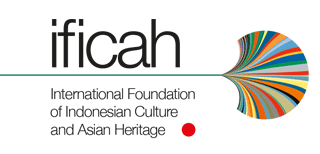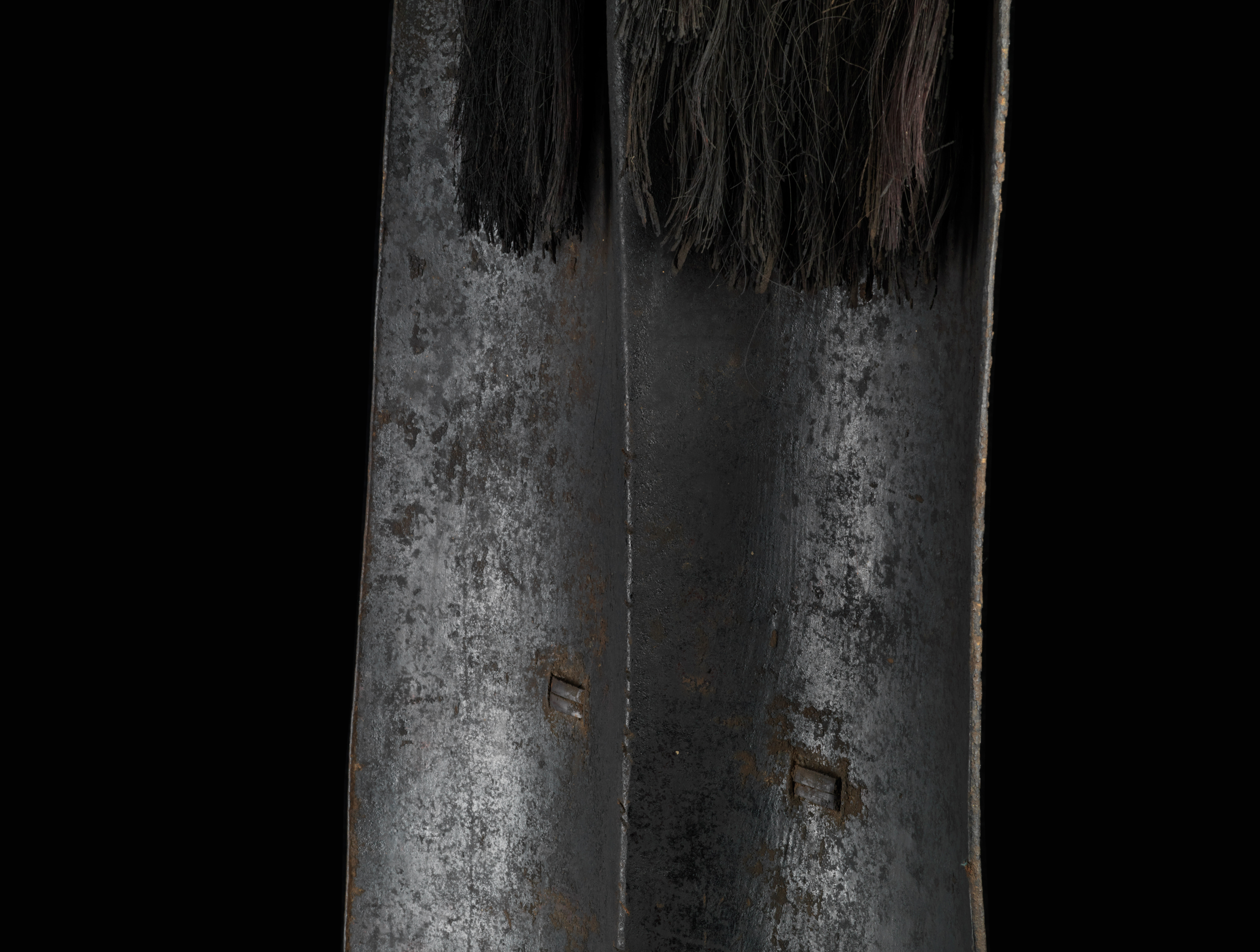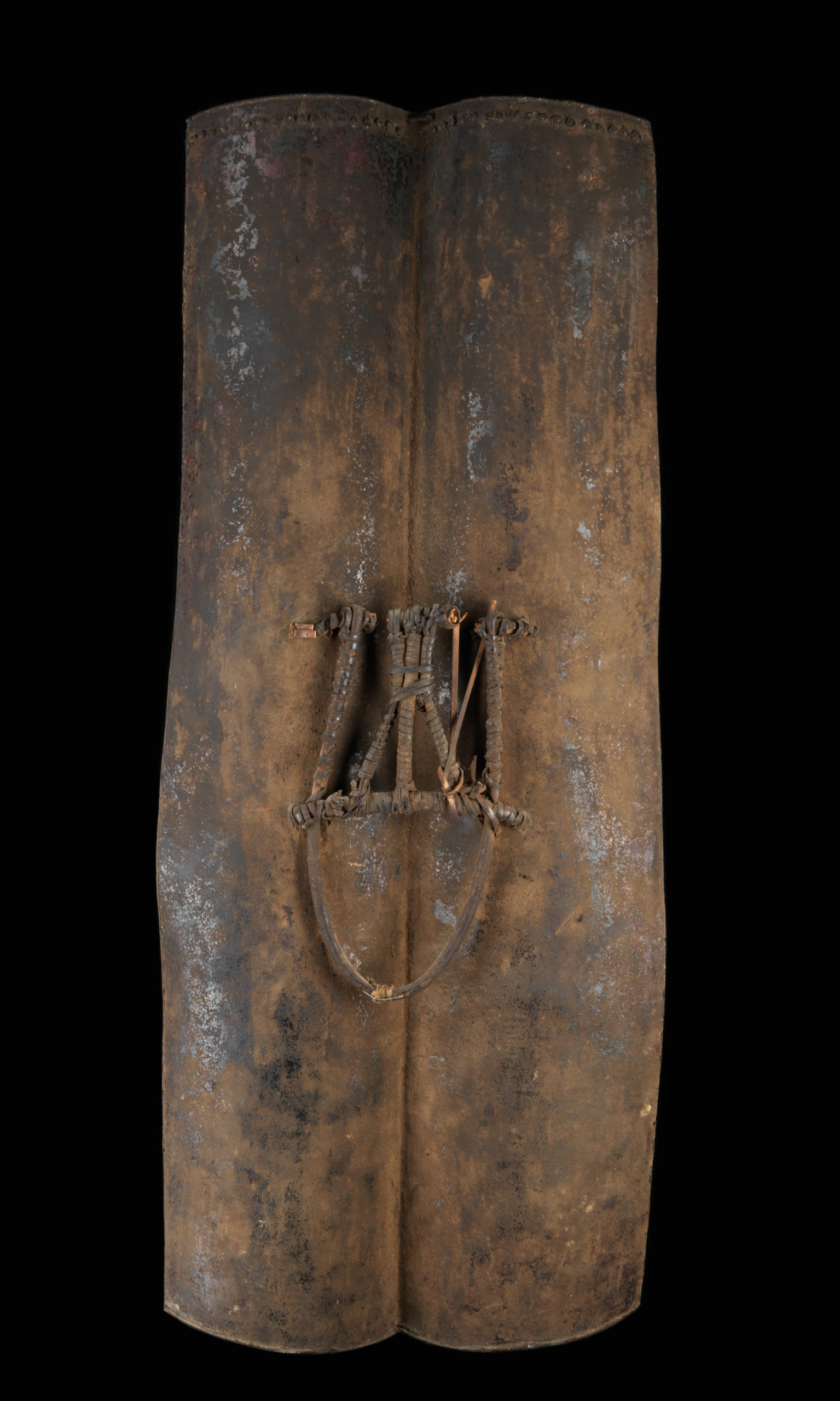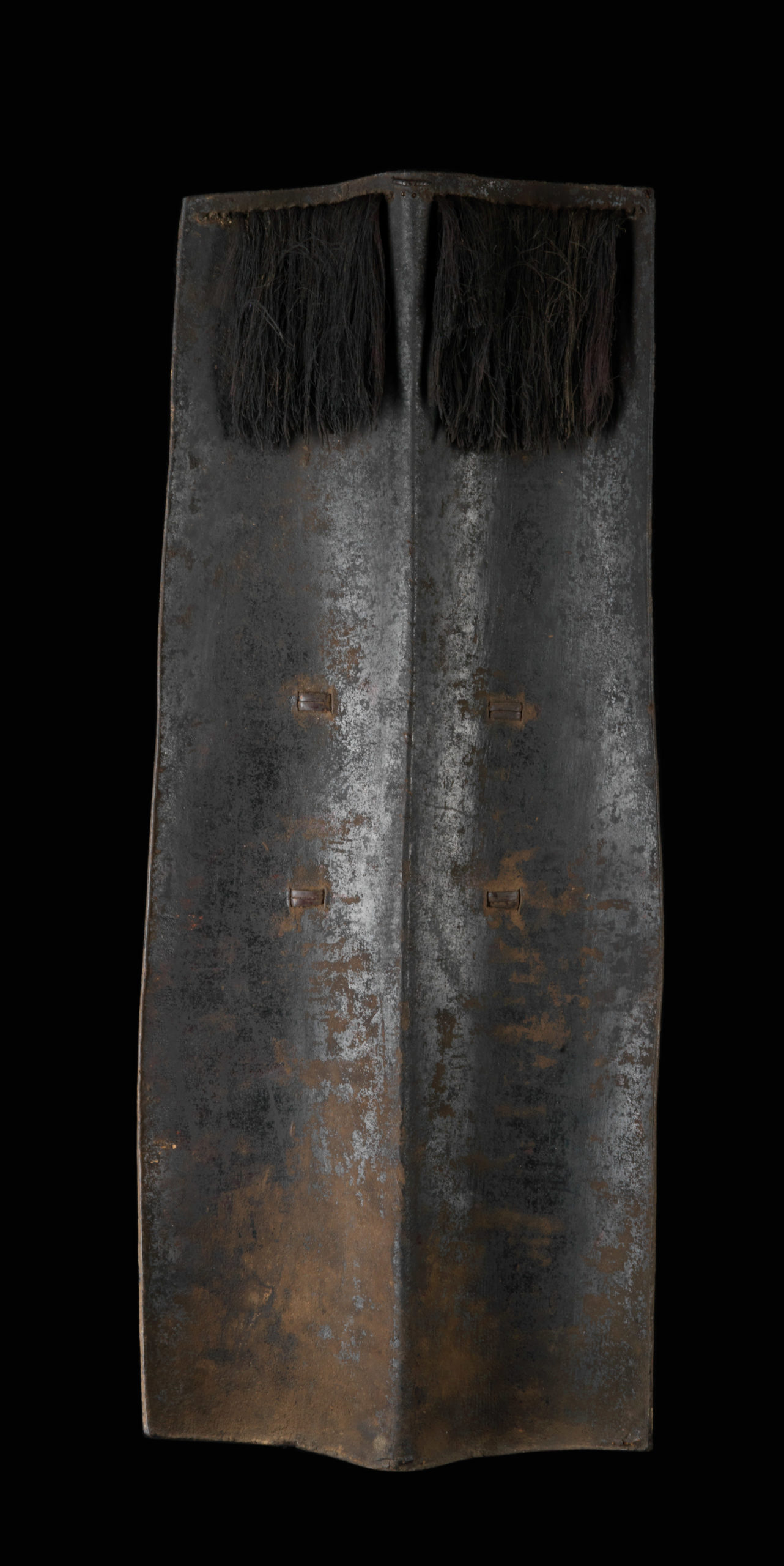Shield Buffalo Skin
This shield is attributed to the Chang-Naga. It has a rectangular outline and consists of dried and smoked rawhide, probably from the mithum buffalo. The cross-section has a roof-shaped profile, with concave surfaces on both sides of the strongly arched central web. This shape gives the shield great rigidity and dimensional stability. The shaping process is carried out using a basic framework of wickerwork or wood to keep distortion when the skin dries to a minimum. The surface is artificially blackened by smoking and a layer of black lacquer, which conceals irregularities in the skin and is perceived as aesthetic. Otherwise the skin would have a glassy, colourless appearance. On the back of the shield there is a handle made of rattan, the fastening loops of which can be seen on the front of the shield. Below the upper edge of the shield, black tufts of hair (buffalo) are attached. Similarly constructed shields of the Konyak Naga are occasionally covered with fur and partly decorated with monkey skulls. Raw hide is a very light and yet robust material that is ideal for battle shields. The mithum buffalo, which provides the skin for these shields, is a domesticated cattle whose ownership is associated with high status. Skin shields are also common among the Batak on Sumatra and the Toraja on Sulawesi. They are said to be able to stop even musket bullets, if well worked.
According to their tradition, the Chang, who were once considered to be fierce warriors and headhunters and culturally hardly distinguishable from the Konyak, emigrated from a region called Changsangmongko and settled in Changsang. The word Chang is said to derive from the sacred banyan tree Chognu, which plays an important role in the Chang mythology. Another theory says that the Chang people immigrated from the east to what is now Nagaland. Chang means “coming from the east” in the eastern Naga dialects. In Chang mythology, the neighbouring Ao-Naga are considered the ancestors of the Chang. The material and spiritual culture of both groups is very similar.
| Object | Shield Buffalo Skin |
| Culture | Naga (Ao or Chang), Tuensang or Mokokchung district, Nagaland, Assam, India/Myanmar border area |
| Time | 19th century |
| Dimensions | Length 94 cm, width 38 cm |
| Material | Animal skin (buffalo), buffalo hair, rattan, lacquer |









